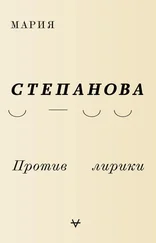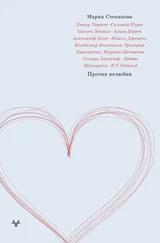From what we now know about the ruin of this city it seems unlikely that anyone who then stood on the Brühl Terrace, with the air full of flying sparks, and saw the conflagration all around can have escaped with an undisturbed mind. The apparently unimpaired ability — shown in most of the eyewitness reports — of everyday language to go on functioning as usual raises doubts of the authenticity of the experiences they record. The death by fire within a few hours of an entire city, with all its buildings and its trees, its inhabitants, its domestic pets, its fixtures and fittings of every kind, must inevitably have led to overload, to paralysis of the capacity to think and feel in those who succeeded in escaping.
Sebald uses a few German sources and accounts by Allied pilots and journalists who witnessed the bombardment for his description of the fires that rose some two thousand meters into the air, so that even the cockpits of the bombers above were warmed by the flames; the scalding water in canals; and the corpses lying in puddles of their own fat. In the logic of Sebald’s lists, whatever else there might be place for, there is none for theodicy: the space in which one might turn to God with a question or a reproach on one’s lips is utterly filled, like the ark, with all those who didn’t escape.
In this sense Sebald didn’t need to choose between the drowned and the saved, or the perished and those who still await death. The feeling of comradeship in the face of our common fate, just like in a town under siege or a sinking ship, makes his approach universal and all-embracing. There is no miracle. Everything we see before us, including ourselves, will disappear, and it won’t take long. So there is no choice: any object or fate or person or name board deserves to be remembered, to flicker once again in the light before all is finally dark.
This lens, this way of looking at the world as if through a film of ash, through Celan’s stationary screen, is particularly persuasive when you realize that the author will be with you until the end, that he is himself already on the other side, and is stretching out his hand to you from over there. In Marina Tsvetaeva’s terrifying poem “Pity…” a woman stops by the unknown dead (“Not your husband? No. // Do you believe in the soul’s resurrection? No.”) hardly herself understanding why, until at the end:
Let me oh let me lay by him
Nail—down—the—lid!
But Sebald’s speech doesn’t just follow the departed. It is as if he has fastened himself to their slant rain-like structure, actually becoming one of those moving along the road toward the past. The narrator of his documentary fictions occasionally inhabits the contours of the author: he has the same history, a few friends among the living, the mustache and passport photograph of Sebald, but a strange transparent quality stops us from thinking of him as real. We follow everything this person does — his movement, which resembles a person driven along by a gust of wind; his hours of work and leisure, which do not coincide with ours; his chronicles of journeys and transfers, of bus routes and long-past hotels, where he watches a woman busying herself at a rolltop desk, as if the forces of gravity still acted on her as they had in life, and there was no point in hurrying on. The listing of street names and railway stations, as if the author doesn’t quite trust his own memory and preferred to note everything down with the greatest care, attaching restaurant receipts and hotel bills. And the photographs that are embedded into the text serve to identify Sebald’s work as accurately as a set of fingerprints. When the photos were being prepared for print Sebald would devote long hours to making them indistinct, as muddily unclear and homogeneous as he could.
Mandelstam pushed the past away, shoved it aside, compressing it into hard matter. But Sebaldian time is constructed quite differently — it has a porous, interstitial structure, like the monasteries in cliff faces, each cell in the rock still maintaining its parallel existence.
When we get close to these texts the problem of their authenticity comes to the fore. It’s as if in working out the relationship between invention and truth, we make a decision on whether or not we can trust the author. This is how you might choose a guide through mountainous territory where every mistake could mean death. It’s almost touching, how pragmatism shapes our persistent interest in the documentary carcass, in the prototype for this or that character and to what degree they are acquainted with or related to the author. Whether the boy on the cover is a real image of the boy inside — what if none of these people are actually real? Critics of Sebald sometimes cast him in the role of a museum curator or a park guard, wrapping the statues to protect them against the frost and checking the glass in the orangery windows: that role is redundant. If we bear in mind that there are no windows and there is no orangery then the function of this prose becomes clearer: it provides the illumination needed for a few things to become discernible. In Austerlitz he describes it like this: “…the longer I think about it the more it seems to me that we who are still alive are unreal in the eyes of the dead, that only occasionally, in certain lights and atmospheric conditions, do we appear in their field of vision.”
I am so very in favor of any combining of the real and imaginary past, the documentary and fictitious, which allows Sebald to set his light machine in motion so the transparent discs of the past move, overlapping each other, filtering the light from one to the next, so that when a real event unexpectedly manifests itself (a real uncle from the family album, an original picture) I am strangely troubled, as if the chosen prototype had unexpectedly turned out to be a special case. I feel this particularly when Sebald is writing about images.
The last part of The Emigrants ends with an extraordinary fragment of memoir. When I haven’t read the book for a while I remember this passage as an enormous text, almost infinitely extending, making up at least half of the entire book. But when I reread The Emigrants I am shocked to find it painfully short, no more than twenty pages. And I think to myself that I don’t really want to know who wrote it. Is it the real woman with a name that begins with the letter L, who decides to think about her childhood, only her childhood, on the very threshold of death: her mother’s books, roses, the road into town? Or is it Sebald himself, speaking in the woman’s voice? Whichever it is, the fragment breaks off suddenly and the book ends with a cinematic darkening of the scene. And then the author tells the story of a photograph he once saw by chance.
Photographs are reproduced throughout the pages of Sebald’s work, scattered like the breadcrumbs Hansel and Gretel plan to use to find their way home. But this image is not shown, merely described, and I have this description before my eyes, always. It is a workshop of some sort in the Łódź Ghetto, dimly lit, in half darkness. Three women bend over the diamonds and triangles of a woven carpet. One of them, says Sebald, has blonde hair and the air of a bride. The second woman’s eyes are in shadow and can’t be made out. The third weaver is looking at me with so steady and relentless a gaze that I cannot meet it for long.
I never thought I would ever see this photograph. Like the well-known portrait of Barthes’s mother in a winter garden, which is described but doesn’t appear in his great book, I thought of this photo as simultaneously real and nonexistent. How strange it was therefore to find that it fits the description absolutely. The picture of the three women was taken by a man named Genewein, a Nazi, the chief bookkeeper of the Łódź Ghetto. In his spare time he documented the hard work being done in the workshops under his charge with a confiscated Movex 12. The collection of pictures includes color images: a group of children dressed in various shades of brown with their caps to one side of their heads. The picture with the carpet and the three weavers is black-and-white, and, unlike the others, when you see it you don’t immediately go cold with horror — the scene imitates life so closely, the calmly seated subjects in front of the camera, the light from a window in the background falling on them, touching their shoulders and hair as if nothing much is happening. This is exactly how it is described in The Emigrants , but with one important omission. In the softly lit air between us (between the women and the camera, between them and me) something that looks a little like a frame hangs at an angle, made from many vertical threads pulled tight. The carpet is rising slowly up this loom and it will soon obscure the room and all those in it. Strange that Sebald didn’t notice this rising veil of carpet. Perhaps it wasn’t there when he looked at the picture.
Читать дальше











